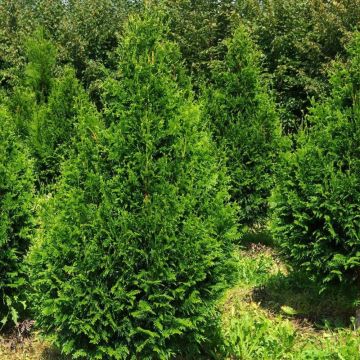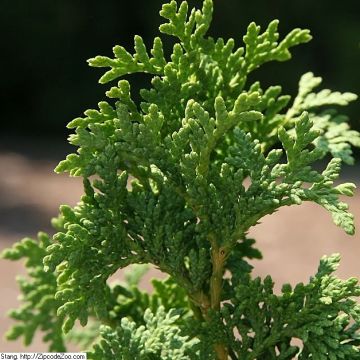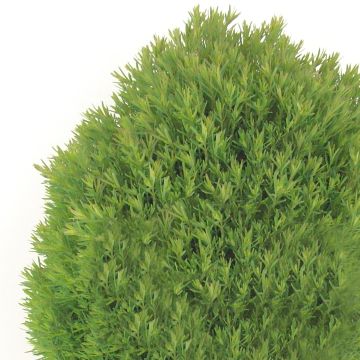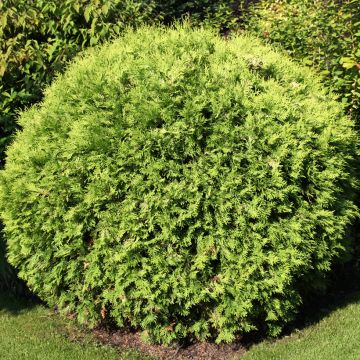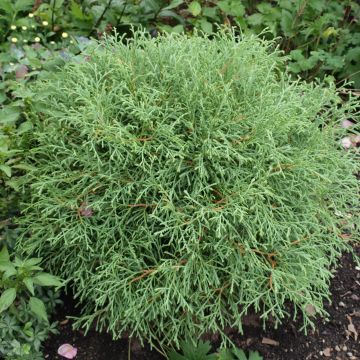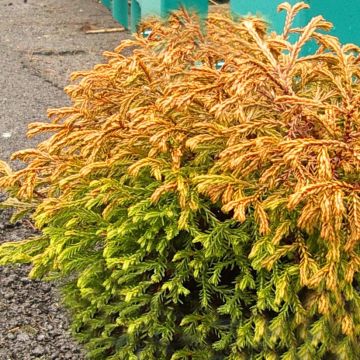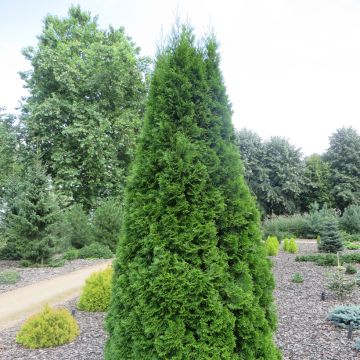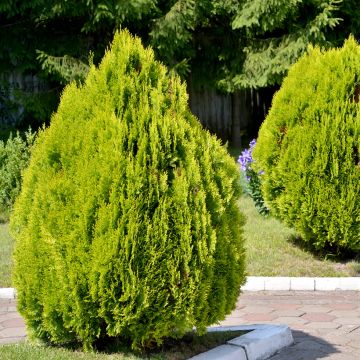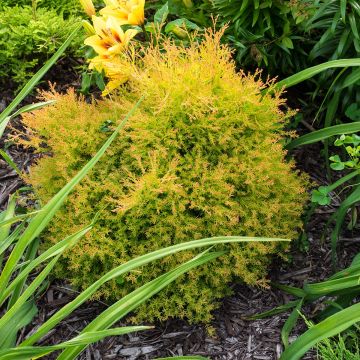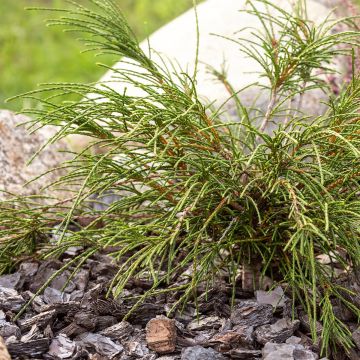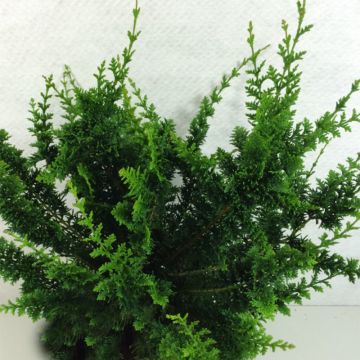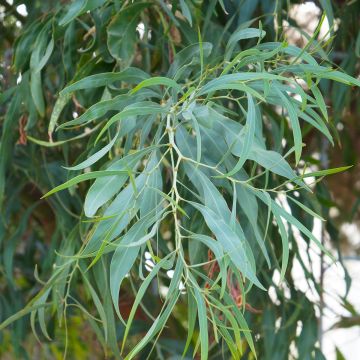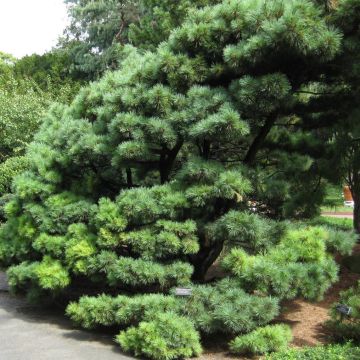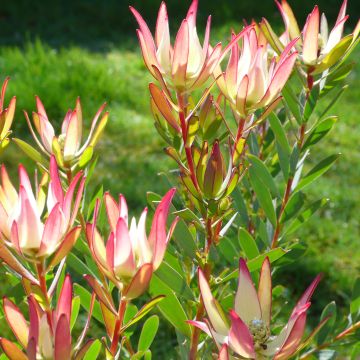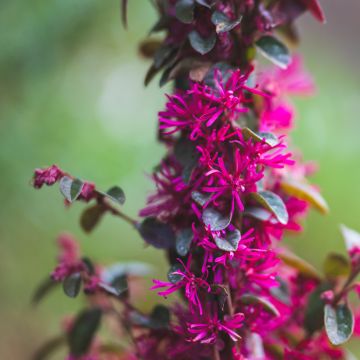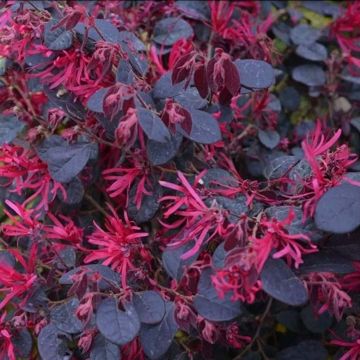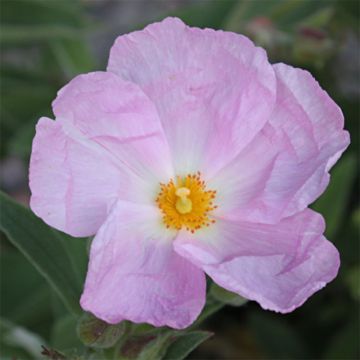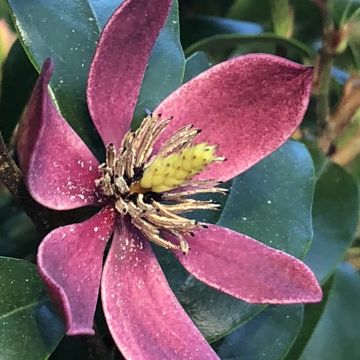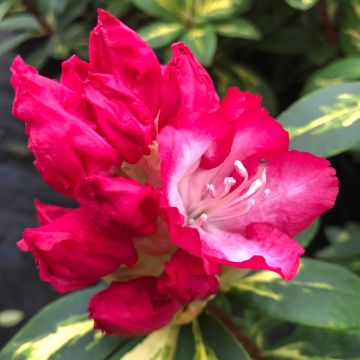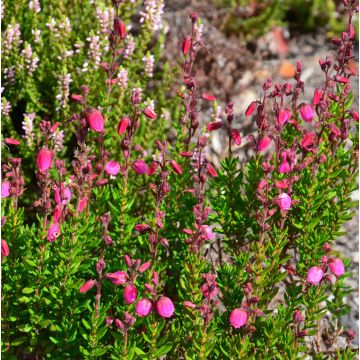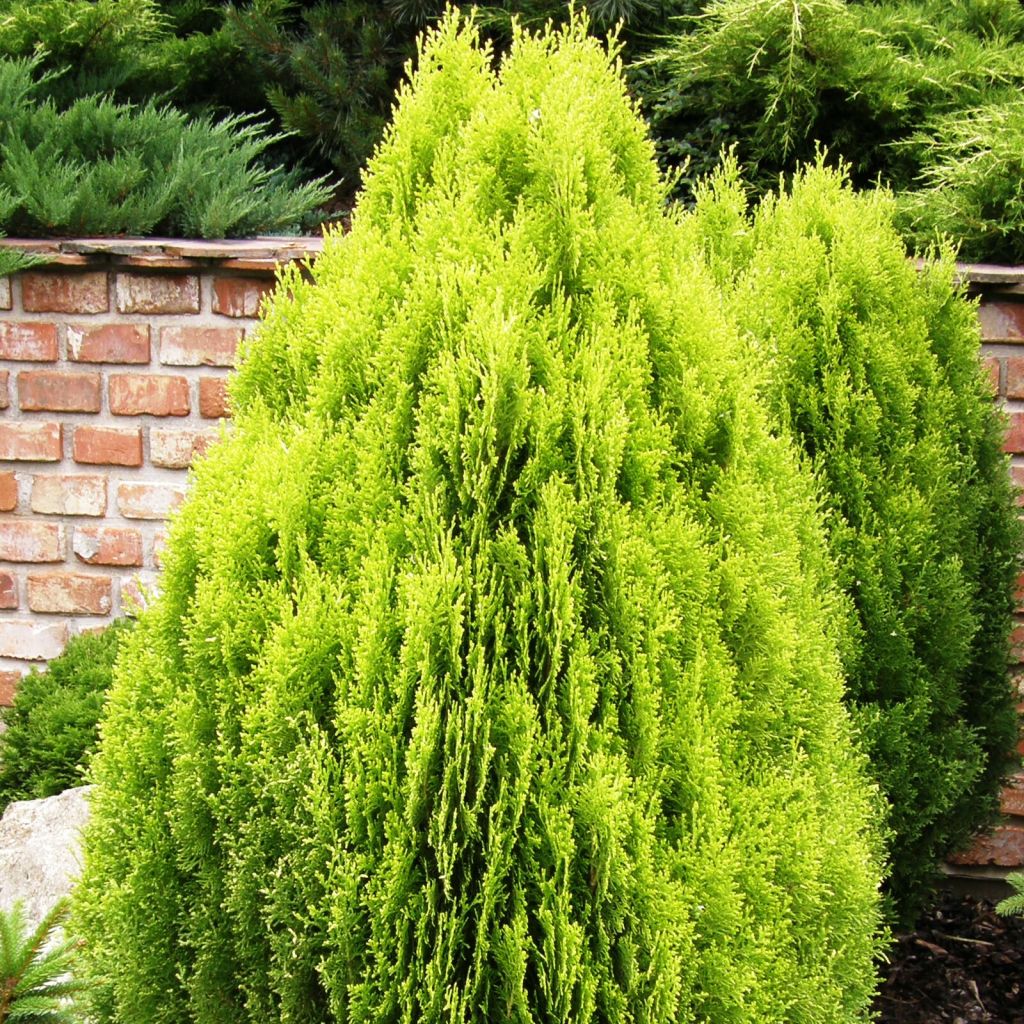

Oriental Arborvitae - Platycladus orientalis Aurea Nana
Oriental Arborvitae - Platycladus orientalis Aurea Nana
Platycladus orientalis Aurea Nana
Oriental Arborvitae, Chinese Arborvitae, Biota, Chinese Golden Cedar
This item cannot be shipped to the selected country
Delivery charge from €5.90
Delivery charge from €5.90
More information
Schedule delivery date,
and select date in basket
This plant carries a 24 months recovery warranty
More information
We guarantee the quality of our plants for a full growing cycle, and will replace at our expense any plant that fails to recover under normal climatic and planting conditions.
From €5.90 for pickup delivery and €6.90 for home delivery
Express home delivery from €8.90.
From €5.90 for pickup delivery and €6.90 for home delivery
Express home delivery from €8.90.


Does this plant fit my garden?
Set up your Plantfit profile →
Description
Platycladus orientalis 'Aurea Nana', formerly known as Thuya orientalis, is a variety of oriental cedar. It is a bright and elegant conifer with a rounded conical habit, a squat silhouette, and curly golden foliage in spring. Its dense foliage turns somewhat greener in summer and takes on a beautiful bronze hue in winter. Its slow growth and small size allow for many uses: in a rockery, as a standalone specimen, in a border, or even in a large pot on a terrace. It is a hardy conifer, not demanding on soil type and tolerates pruning very well. It prefers a well-drained, not too dry soil, and a sunny exposure.
Platycladus orientalis, also known as Thuya orientalis or Biota orientalis or simply Chinese cedar, sometimes bears the lovely name Tree of Life, due to its longevity and vigour. It is an evergreen conifer of the cypress family native to China, but also distributed from Iran to Japan. In the wild, it reaches 12 m to 20 m (39.3 ft to 65.6 ft) in height, adopting a beautiful columnar to conical habit with spreading branches. It is a hardy species, well adapted to temperate climates and occasionally dry limestone soils. Its wood is used in Buddhist temples for construction, as well as burned as incense.
The 'Aurea Nana' variety is distinguished by its small size, its very compact habit in a conical and rounded bush shape, and its foliage with changing golden colours. It grows slowly, and will reach a maximum 100 cm (39.4 in) in height and 80 cm (31.5 in) in spread at maturity. Its tightly packed ascending branches are covered with scale-like and triangular leaves, overlapping each other to create a flattened appearance. The young shoots are golden in spring, turning green-yellow in summer and bronze in winter. When lightly bruised, the foliage releases a pleasant aroma. Ovoid cones are formed by 3 or 4 pairs of scales with recurved tips. On its trunk, the bark is reddish-brown, with small fissures running lengthwise.
Platycladus orientalis 'Aurea Nana' works well in a small garden, in a rockery, grouped in a small free-standing screen, or planted in groups of three near an entrance. It can also be installed in a decorative container on a terrace or balcony. It goes well with large decorative stones, the geometric lines of swimming pools or buildings, and masonry works. In planting schemes, position it with complementary grasses or the indestructible Microbiota decussata, which has a similar autumn colour. The visual qualities of conifers naturally suit contemporary garden design, which prefers the aesthetics of shapes, silhouettes, and textures over the daintiness of flowers. These plants provide a structural permanence to borders. They can also work as an alternative to trimmed boxwood or holly when using plants to mark pathways or border a terrace. The key is to play with volumes and colours to find the right look.
Report an error about the product description
Oriental Arborvitae - Platycladus orientalis Aurea Nana in pictures
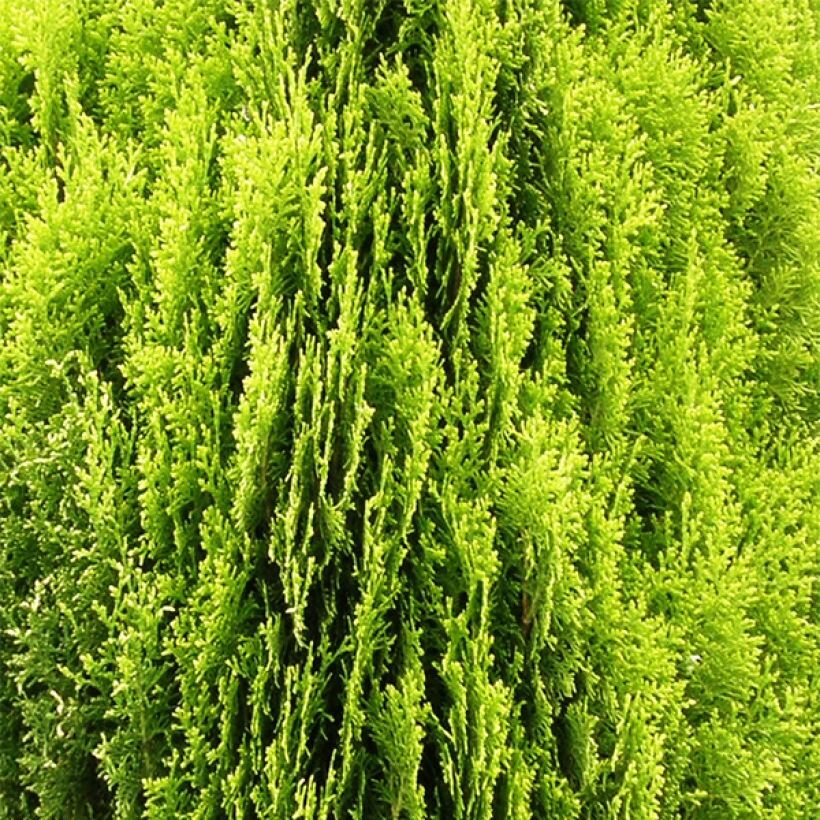

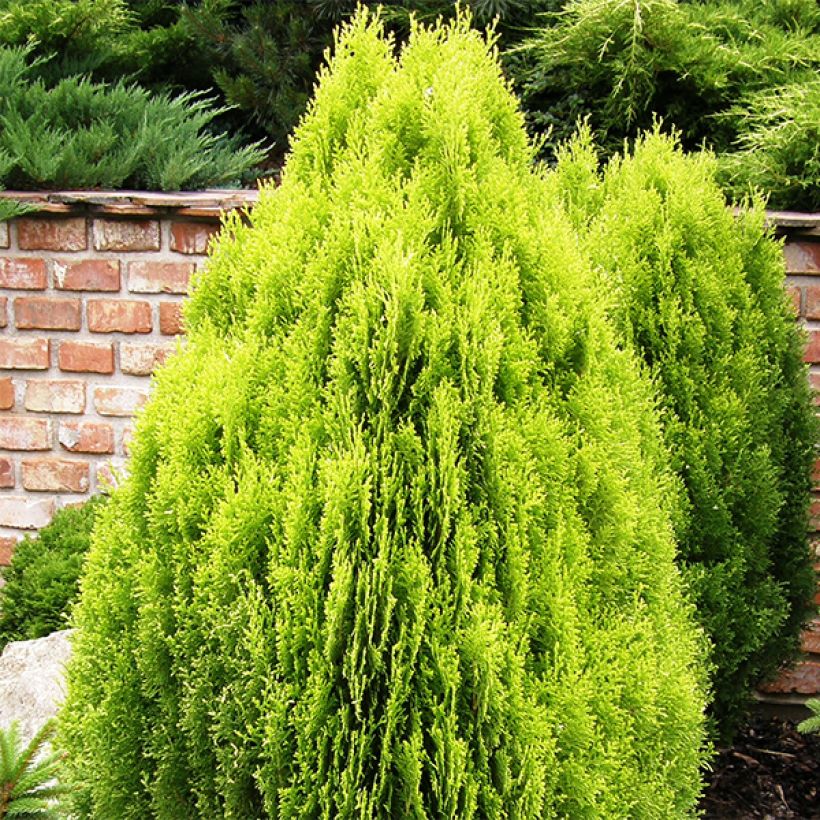

Plant habit
Flowering
Foliage
Botanical data
Platycladus
orientalis
Aurea Nana
Cupressaceae
Oriental Arborvitae, Chinese Arborvitae, Biota, Chinese Golden Cedar
Cultivar or hybrid
Other Thuya - Thuja
Planting and care
Plant Platycladus orientalis 'Aurea Nana' from September to November and from February to June in deep, ordinary but loose and light soil. It can even tolerate limestone. 'Aurea Nana' does not like scorching temperatures and cannot tolerate prolonged drought. It requires a sunny or semi-shaded exposure to develop well. Soak the root balls well before planting. If desired, add organic matter when planting. Water generously in the first years and during prolonged drought. You can apply a special conifer fertiliser every year in April and cultivate the soil in summer. This hardy conifer (up to -15°C (5° F) at least) can be pruned, even if its natural habit does not require it at all. If necessary, pruning should be light and only involve young branches. Indeed, aged wood, devoid of foliage, does not produce new growth.
Planting period
Intended location
Care
-
, onOrder confirmed
Reply from on Promesse de fleurs
Evergreen shrubs
Haven't found what you were looking for?
Hardiness is the lowest winter temperature a plant can endure without suffering serious damage or even dying. However, hardiness is affected by location (a sheltered area, such as a patio), protection (winter cover) and soil type (hardiness is improved by well-drained soil).

Photo Sharing Terms & Conditions
In order to encourage gardeners to interact and share their experiences, Promesse de fleurs offers various media enabling content to be uploaded onto its Site - in particular via the ‘Photo sharing’ module.
The User agrees to refrain from:
- Posting any content that is illegal, prejudicial, insulting, racist, inciteful to hatred, revisionist, contrary to public decency, that infringes on privacy or on the privacy rights of third parties, in particular the publicity rights of persons and goods, intellectual property rights, or the right to privacy.
- Submitting content on behalf of a third party;
- Impersonate the identity of a third party and/or publish any personal information about a third party;
In general, the User undertakes to refrain from any unethical behaviour.
All Content (in particular text, comments, files, images, photos, videos, creative works, etc.), which may be subject to property or intellectual property rights, image or other private rights, shall remain the property of the User, subject to the limited rights granted by the terms of the licence granted by Promesse de fleurs as stated below. Users are at liberty to publish or not to publish such Content on the Site, notably via the ‘Photo Sharing’ facility, and accept that this Content shall be made public and freely accessible, notably on the Internet.
Users further acknowledge, undertake to have ,and guarantee that they hold all necessary rights and permissions to publish such material on the Site, in particular with regard to the legislation in force pertaining to any privacy, property, intellectual property, image, or contractual rights, or rights of any other nature. By publishing such Content on the Site, Users acknowledge accepting full liability as publishers of the Content within the meaning of the law, and grant Promesse de fleurs, free of charge, an inclusive, worldwide licence for the said Content for the entire duration of its publication, including all reproduction, representation, up/downloading, displaying, performing, transmission, and storage rights.
Users also grant permission for their name to be linked to the Content and accept that this link may not always be made available.
By engaging in posting material, Users consent to their Content becoming automatically accessible on the Internet, in particular on other sites and/or blogs and/or web pages of the Promesse de fleurs site, including in particular social pages and the Promesse de fleurs catalogue.
Users may secure the removal of entrusted content free of charge by issuing a simple request via our contact form.
The flowering period indicated on our website applies to countries and regions located in USDA zone 8 (France, the United Kingdom, Ireland, the Netherlands, etc.)
It will vary according to where you live:
- In zones 9 to 10 (Italy, Spain, Greece, etc.), flowering will occur about 2 to 4 weeks earlier.
- In zones 6 to 7 (Germany, Poland, Slovenia, and lower mountainous regions), flowering will be delayed by 2 to 3 weeks.
- In zone 5 (Central Europe, Scandinavia), blooming will be delayed by 3 to 5 weeks.
In temperate climates, pruning of spring-flowering shrubs (forsythia, spireas, etc.) should be done just after flowering.
Pruning of summer-flowering shrubs (Indian Lilac, Perovskia, etc.) can be done in winter or spring.
In cold regions as well as with frost-sensitive plants, avoid pruning too early when severe frosts may still occur.
The planting period indicated on our website applies to countries and regions located in USDA zone 8 (France, United Kingdom, Ireland, Netherlands).
It will vary according to where you live:
- In Mediterranean zones (Marseille, Madrid, Milan, etc.), autumn and winter are the best planting periods.
- In continental zones (Strasbourg, Munich, Vienna, etc.), delay planting by 2 to 3 weeks in spring and bring it forward by 2 to 4 weeks in autumn.
- In mountainous regions (the Alps, Pyrenees, Carpathians, etc.), it is best to plant in late spring (May-June) or late summer (August-September).
The harvesting period indicated on our website applies to countries and regions in USDA zone 8 (France, England, Ireland, the Netherlands).
In colder areas (Scandinavia, Poland, Austria...) fruit and vegetable harvests are likely to be delayed by 3-4 weeks.
In warmer areas (Italy, Spain, Greece, etc.), harvesting will probably take place earlier, depending on weather conditions.
The sowing periods indicated on our website apply to countries and regions within USDA Zone 8 (France, UK, Ireland, Netherlands).
In colder areas (Scandinavia, Poland, Austria...), delay any outdoor sowing by 3-4 weeks, or sow under glass.
In warmer climes (Italy, Spain, Greece, etc.), bring outdoor sowing forward by a few weeks.

































